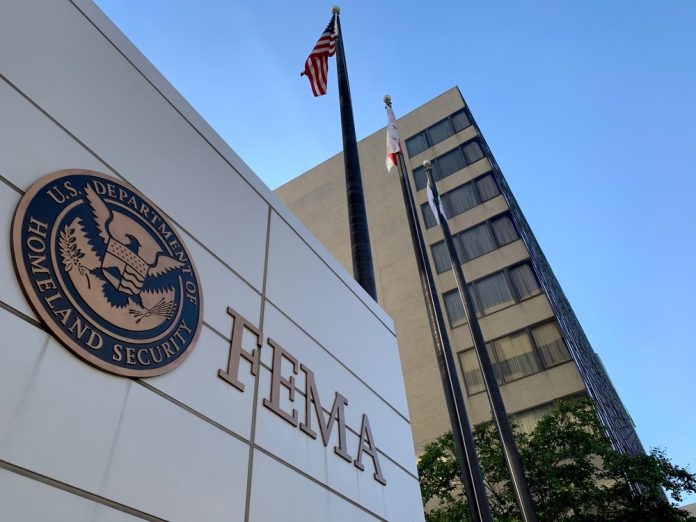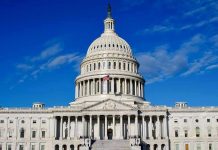
Trump’s plan to dismantle FEMA after the 2025 hurricane season has triggered a mass exodus of emergency personnel, leaving America vulnerable during what experts predict will be an unusually active storm season.
Key Takeaways
- Trump initially announced FEMA’s elimination in January 2025 but delayed implementation until after the November 30 hurricane season
- FEMA has already lost 25% of its workforce since January 2025, with projections of 30% total reduction by year’s end
- Secretary Kristi Noem plans to shift disaster responsibilities to states, declaring “if they can’t handle it, they shouldn’t be governor”
- A bipartisan congressional bill aims to make FEMA independent from DHS, directly challenging Trump’s restructuring plans
- The administration intends to eliminate multibillion-dollar preparedness grants and long-term rebuilding funds
Trump’s Delayed FEMA Dismantling Creates Uncertainty
President Donald Trump’s administration has set its sights on a dramatic overhaul of the Federal Emergency Management Agency, announcing plans to eliminate the agency entirely before walking back the timeline until after the 2025 hurricane season ends on November 30. This postponement came after significant pushback from emergency management professionals and coastal state officials who expressed alarm at dismantling the nation’s primary disaster response agency during what meteorologists predict will be an unusually active hurricane season.
Despite the delayed implementation, the mere announcement has triggered a staffing crisis within FEMA. The agency has already lost 25% of its workforce since January 2025, with internal projections suggesting staff reductions could reach 30% by year’s end. This exodus of experienced emergency personnel comes at a critical time when coastal communities are bracing for what could be a devastating storm season, leaving many state emergency managers scrambling to develop contingency plans.
Noem Leads Controversial “State-First” Approach
Homeland Security Secretary Kristi Noem has emerged as the primary architect of Trump’s FEMA restructuring plan. After initially declaring in March 2025 that “we are eliminating FEMA,” Noem later backpedaled, reframing the effort as a “reorientation” to empower states. Her vision involves transforming FEMA into what she describes as a “lean, deployable disaster force” focused exclusively on immediate life-saving operations, while shifting long-term recovery responsibilities entirely to state governments.
“Governors should be the ones managing disasters in their states,” Noem stated bluntly during a May meeting of the FEMA Review Council. “If they can’t handle it, they shouldn’t be governor.” This hardline stance reflects the administration’s broader philosophy of reducing federal oversight and pushing responsibilities down to state governments, regardless of their varying capacities to handle major disasters.
The restructuring plan includes eliminating multibillion-dollar preparedness grants and long-term rebuilding funds that states have historically relied upon for disaster recovery. Instead, FEMA would be reduced to pre-staging supplies and providing catastrophic funding only in the most extreme circumstances, with states expected to develop robust mutual aid agreements to assist each other during emergencies.
Congressional Pushback Gains Momentum
As the Trump administration advances its plans to dismantle FEMA, a bipartisan coalition in Congress has introduced legislation that directly challenges these efforts. The proposed bill would not only preserve FEMA but actually expand its authority, allowing the agency to fund major home repairs and penalize states that fail to adequately mitigate disaster risks. Most significantly, the legislation would make FEMA completely independent from the Department of Homeland Security, placing it beyond the reach of executive branch restructuring.
“Disaster response shouldn’t be a partisan issue,” said Representative Michael McCaul (R-TX), one of the bill’s co-sponsors. “When hurricanes hit or wildfires rage, Americans expect their government to respond effectively regardless of which state they live in. This legislation ensures we maintain a coordinated national approach to emergencies rather than a patchwork of state-level responses.”
States Scramble to Prepare Amid Uncertainty
Florida emergency management officials, who oversee one of America’s most hurricane-vulnerable states, are preparing for the 2025 hurricane season under a cloud of uncertainty. County emergency managers are developing contingency plans that rely less on federal assistance, though many privately acknowledge that state resources would be quickly overwhelmed by a major hurricane. The situation has created tension between state officials publicly supporting the administration’s “state-first” approach and local emergency managers concerned about response capabilities.
Eric Poole, executive director of the Florida Association of Counties, expressed cautious optimism about federal support depending on the severity of events. “We’re preparing as best we can with the resources we have, but there’s no substitute for the coordination and funding FEMA provides during major disasters,” Poole noted. “When a Category 4 or 5 hurricane makes landfall, no single state has the resources to handle that alone.”
Meanwhile, Texas received a major disaster declaration in May 2025, demonstrating FEMA’s ongoing operational role despite the restructuring talks. This has created confusion among state emergency managers about what federal assistance will look like in the coming months and years as the administration’s plans unfold.
Political Strategy Behind the Scenes
Sources close to the administration reveal that former Trump campaign manager Corey Lewandowski has been heavily involved in shaping the FEMA restructuring plan, suggesting political calculations may be driving the policy. The plan reportedly includes rebranding a smaller version of FEMA under direct White House control, focusing exclusively on immediate disaster response while eliminating the agency’s mitigation and long-term recovery functions.
Critics argue this approach prioritizes political optics over effective emergency management, potentially leaving vulnerable communities without crucial federal support during their most desperate times. The timing of the restructuring—delayed until after hurricane season—has also raised questions about whether the administration is hedging against potential political blowback should a major disaster strike during implementation.
Legal and Practical Challenges Ahead
Legal experts question whether Trump can unilaterally dismantle FEMA without congressional approval, given the agency’s statutory mandates established by multiple laws. This legal uncertainty, combined with bipartisan congressional opposition, suggests the administration’s plans may face significant hurdles even after the hurricane season ends.
Perhaps the most immediate practical challenge is the ongoing staff exodus. With FEMA already down 25% of its workforce and more departures expected, the agency’s ability to respond effectively to disasters this season has been compromised. Emergency management professionals warn that institutional knowledge and experience cannot be quickly replaced, potentially leaving Americans vulnerable during what NOAA predicts will be an above-average hurricane season.
Sources:
Florida braces for hurricane season as Trump plans FEMA reforms
Noem backpedals on her claim that FEMA will be eliminated
Trump’s plan to overhaul disaster agency once hurricane season is over prompts Democratic concerns
Noem privately backs shrinking FEMA, eliminating long-term rebuilding funds
Trump FEMA elimination date set after 2025 hurricane season












